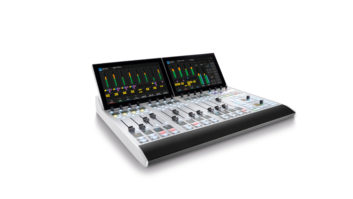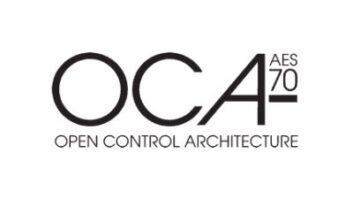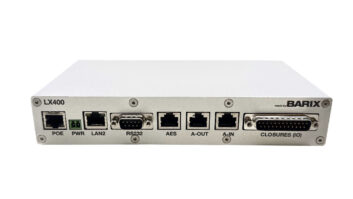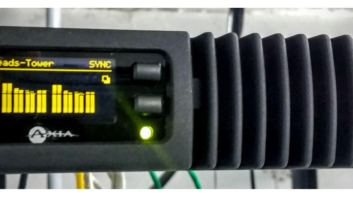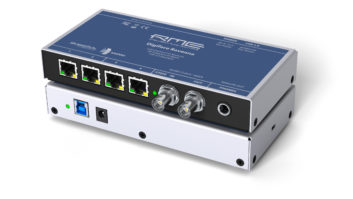PHOENIX A few years ago an engineer in Phoenix, Dennis Gilliam told me about the Barix audio-over-IP devices and how he was using them to stream program audio to a translator in New Mexico.
Arizona Broadcast Service, a broadcast equipment and service integrator based here, has since installed multiple Barix Instreamer and Exstreamer devices, with six live installations. The devices provide a cost-effective and reliable way to distribute audio locally and around the state via Internet streaming, and both studio-to-studio and studio-to-transmitter IP connections.
First stop
Our first Barix system was installed to improve the audio quality of a live, weekly remote broadcast for Prescott Valley Broadcasting originating from The Lariat, a restaurant in the Prescott Inn.

Barix Instreamer 100 encoders and Extreamer 100 decoders at work at the KPPV(FM) studios. The Barix system replaced a remote relay over a phone line and continued for 18 months. The station group owner, Sanford Cohen, requested a higher quality connection to send audio back to the studio.
Simultaneously, Cohen and the owner of Bulleri Wireless, a wireless Internet provider in Prescott, Ariz., were working out agreements to share tower space on his KPPV(FM) solar-powered STL repeater site on Glassford Hill in Prescott Valley.
Bulleri required a node to link Prescott Valley and its main building in Prescott. I arranged for a Bulleri wireless link installation at the hotel and configured a fixed IP address for the Barix connection. I then installed an Instreamer 100 at the hotel and connected it to the wireless link node.
Bulleri installed a node on the studio roof and I installed an Exstreamer 100 with an MCM unbalanced-to-balanced converter. This audio was then wired into the house router.
The first show was nothing short of perfect, and management was blown away by the quality of audio.
We have also used this setup to air local Prescott parades and other live events. Bulleri provides a portable 2.4 Gbps antenna node, and the Instreamer finds an immediate connection to the Extreamer once connected to the wireless antenna.
The second Barix system is a studio-to-studio connection between the Prescott studio and KPKR(FM) in Parker, Ariz. We were unable to air the program audio via an IP connection due to extremely high packet loss from local provider NPG Cable in Parker, but the arrangement worked well enough for an on-air monitoring application. We installed a Barix Instreamer 100 at the KPKR studio and wired an Exstreamer 100 to the main studio audio router. This enabled the local Prescott personnel to monitor the KPKR signal off-air.
Our next Barix installation was to provide an Internet streaming platform for KPPV and KDDL(FM) using Barix Instreamer 100 encoding devices. The only requirement was to enable an Icecast MP3 streaming format and configure the fixed IP addresses supplied by Bulleri Networks.
Challenges
There was initially a challenge interfacing the Barix output stream with Amellus, our Internet streaming provider. Amellus requested a constant bit rate and the Barix devices stream a variable bit rate output. Daniel White, an engineer at KGCB in Prescott, Ariz, also works with Amellus and was able to solve the problem using conversion software that only slightly affects the audio quality due to multiple conversions of the stream.
The next Barix installation was completed this year when Prescott Valley Broadcasting took advantage of the new AM over FM rule change and purchased a local translator on 99.9 MHz.
This transmitter is on the same site as the KPPV main transmitter and a large Bulleri wireless node. An Instreamer 100 was installed at the studio with a MCM matching box for the audio. At the receive site, an Exstreamer 100 was installed with a MCM matching box to raise the level to feed the FM processor. Bulleri ran a shielded Cat-5E from its node router 80 feet away directly to the Barix Exstreamer 100 at the transmitter site.
We initially experienced dropouts on the links when the system was put online. Bulleri did an analysis and found that we were maxing out our bandwidth allotment between the main studio and the Glassford site. We solved the problem by replacing the original 1.5 MHz shared link with a dedicated 20 MHz point-to-point link.
KQNA(AM), Prescott Valley Broadcasting’s daytime signal on 1130, recently launched our latest Barix installation. Here, an Instreamer 100 passes an Icecast MP3 signal to Amellus for online program distribution and streaming.
Only one device has failed through all of these applications, which Broadcasters General Store quickly replaced under warranty. I have found the Barix devices reliable. My only suggestion is that Barix add an audio indicator to the Exstreamer along with a variable/fixed bandwidth setting.
The Barix boxes have been a cost-effective way to distribute audio around our market and the state of Arizona. Indeed Barix has provided the only cost-effective way to monitor our on-air operation in Parker. I have also been fortunate to have the services of Bulleri Wireless Networks Company in Prescott. The help of Robert Clark, the Bulleri staff and the ability to configure my Barix devices on fixed IP addresses has made my Barix network work smoothly.
Mark Parthe is owner of Arizona Broadcast Service.
For information, contact Barix at (866) 815-0866 or visitwww.barix.com.






